The resounding victory of the Bharatiya Janata Party (BJP) in the recent Gujarat Assembly election has once again reinforced the argument that with good governance and a strong development-oriented agenda, it is possible to buck the anti-incumbency trend in state elections. While the party has romped home for the fifth consecutive time since 1995, the Chief Minister, Mr. Narendra Modi has secured a renewed mandate for the third time. Interestingly, the Chief Minister has secured a fresh approval from the people with by and large the same proportion of votes and seats as in the past.
While a plethora of issues bombard voters during an election, Mr. Modi’s campaign revolved solely on his development plank and on his achievements over the last 11 years. Those who have seen elections being won and lost in many states in recent years on the triple issues of Bijli, Sadak and Pani (Electricity, Roads and Water), can easily discern why the Chief Minister secured a renewed mandate in such a convincing manner. The Modi government’s commitment to ensure power supply to every home in the state, has improved the quality of life of the people in many ways. Every homemaker in the state says that assured power supply has brought in three advantages: It is a boon for school and college-going children in the family. They are able to devote more time to their studies at home; it has helped many homemakers augment their family income with some cottage-industry kind of activity; and finally, it enables them to watch some of their favourite TV soaps. Guaranteed water supply to large parts of the state has also reduced the drudgery of women, who walk many miles to secure potable water for their families. The improvement in the quality of roads has meant better communication between towns and villages and consequently a better quality of life. These are three of the key factors which have contributed to what Mr. Modi calls the “pro-incumbency” vote in Gujarat.
All this is not to say that the other issues – specially the gnawing ones relating the post-Godhra riots of 2002 and the conflict between the state government and the union government on minority-related issues – did not matter in this election. They did, but only marginally. These issues have been flogged for an entire decade and although not irrelevant, has led to a kind of ennui among the people of the state. A study of the results from the 182 assembly constituencies in the state, is revealing in terms of how the public perceived these issues in this election. Here are some pointers:
For the BJP, barring this little set back of not reaching 117, the Modi-led campaign has been remarkable. The party was the winner or the runner-up in 180 of the 182 constituencies. BJP candidates fell to third place in just two seats. The party also won most of its seats rather convincingly, unlike the Congress, which just nudged ahead in a large number of constituencies. The party’s most spectacular win was in Ghatlodia where its candidate trounced his Congress rival by over 1,10,000 votes. Chief Minister Narendra Modi won his Maninagar seat by the second highest margin in the state (over 86,000). He secured over 75 per cent of the votes polled. Also significant from the point of view of the political debate that has been on in the state and all over the country over the post-Godhra riots of 2002 were the results in two other constituencies – Naroda and Naranpura. Ms. Maya Kodnani, a minister in the Modi government, who had won the Naroda seat in 2007 has since been convicted and jailed for life in a riots-related case.
She had won this seat by a record margin of 1.80 lakh votes in 2007. In 2012, the BJP candidate trounced his Congress rival by close to 70,000 votes. In Naranpura, the BJP fielded Amit Shah, another minister in the previous Modi government who is being prosecuted in a fake encounter case. Shah too won this seat by a huge margin of 63,000 votes this time. However, the voters firmly rejected Mr.Gordhan Zadaphia, a key minister in the Modi government at the time of the riots, who later deserted him. Mr.Zadaphia who contested on the GPP ticket from Gondal lost to his BJP rival by 45,000 votes. These results offer some clue in regard to the attitude of the voters to the riots of 2002, which were triggered by the gruesome incident at the Godhra Railway Station when 59 Hindu kar sevaks were burnt alive by a mob.
As far as the Congress is concerned, the overall approach of the party to the assembly election in Gujarat came as a disappointment for all those who expected it to give Mr. Modi a stiff fight. Everyone knew that the Gujarat Assembly election was due at the end of 2012, but the Congress Party failed to get its act together in time for the big contest. It did not position a strong state leader to counter the Chief Minister, nor did it stitch up clever electoral alliances that could have meant an accretion to its vote share. The party’s failure to promote its state level leaders also led to the defeat of its state party president Mr. Modhwadia by over 17,000 votes in Porbandar and the Leader of the Congress Party in the State Assembly, Mr. Shaktisinh Govil in Bhavnagar Rural by 18,000 votes. For some inexplicable reason, the Congress campaign was marked by hesitation and a lack of purpose.
The 2012 results show that, although the Congress could not have defeated the BJP, it could surely have narrowed the margin of victory if it had galvanised the state unit ahead of the poll. For example, the Congress secured 38 per cent of the votes as against 49.12 per cent of the BJP in the 2007 assembly poll. This time around, the party has got 40 per cent of the vote (an increase of 2 per cent), while the BJP’s vote share is down by one per cent to 48. Thus the gap between the two parties has narrowed to 8 per cent. Mr. Keshubhai Patel managed to garner over 3 per cent of the vote. These figures show that with some clever electoral engineering, the Congress could have given Mr. Modi a credible fight. But the party was so dispirited that it chose to rest its guns on the shoulders of NGOs and social activists.
Even its national leaders – Ms.Sonia Gandhi and Rahul Gandhi - registered only a token presence in the state during the campaign. Although the Gujarat Parivartan Party (GPP) of Keshubhai Patel got rather ambitious and put up candidates in most of the constituencies, the party put up a fairly decent fight is just about a dozen constituencies. Everywhere else, they got a severe drubbing and secured under 2000 votes – the kind of support that first –time independents manage to muster – in an election. Overall, the GPP got just over 3 per cent of the votes and upset the BJP’s calculations a wee bit. The results show that the BJP lost at least five constituencies because of the GPP. Thus, all that Keshubhai achieved was to prevent Modi from crossing the psychological barrier of 117 – the number of seats the party had won in 2007.
This election in Gujarat was unique for yet another reason – the enthusiasm of voters to exercise their franchise. Over the years the voting percentage in elections has been just about average in this state. In 2002, 61 per cent of the electors came out to vote. In 2007, the voting percentage touched 60 per cent. This slumped to just 48 per cent in the Lok Sabha election held in 2009. However, in 2012, over 71 per cent of the electors came out to vote. The turnout was heavy both in the rural and urban constituencies and across regions in the state and lent itself to much interpretation, the most popular of which was that it would hurt the prospects of the incumbent government. The results however showed that there was a proportionate distribution of the additional ten per cent votes between the main contenders.
As usual, there was the usual play of words after the election results came in. Although the BJP won the assembly election by a convincing margin and had a clear 8 per cent lead over the Congress in terms of vote share, the Congress has stubbornly refused to concede defeat and several of its leaders have advanced the most convoluted arguments to run down the winner and to deny him victory. For example, the Union Finance Minister Mr. P.Chidambaram has said that since the Congress had improved its tally in the Gujarat Assembly by 2 seats in this election and since the BJP had not crossed 117, the Congress Party was “a clear winner in Gujarat”. The results (BJP -115, Congress -61), showed how exaggerated the claims of the BJP were. Also, according to him, though the BJP had won the state, large sections of the population in Gujarat “felt left out”. The Congress Party has argued since the riots of 2002 that when the BJP is in power in Gujarat, the religious minorities get a raw deal. After On December 20, the Finance Minister claimed that many more communities felt disenfranchised - “Saurashtra feels left behind; the tribals feel left behind”. Saurashtra accounts for 54 seats and as many as 26 seats are reserved for Scheduled Tribes in Gujarat. Further, there are over 30 seats in which the Muslim vote counts for more than 20 per cent. How can a party bag 115 seats (constituting 62 per cent) in the 182-member assembly after excluding Saurashtra, the tribals and the minorities in a state like Gujarat?
Several other ministers and Congress Party spokespersons applied this skewed logic to the results. The Human Resource Development Minister, Mr. Kapil Sibal declared most ungraciously that though Modi ran a 3D campaign, he had secured only a 2D victory. These remarks stem from the Congress Party’s skewed sense of victory and defeat in Gujarat. It believes that since the BJP did not cross 117, it was “defeated”, although one needs just 92 seats for a clear majority in the Gujarat Assembly. Also, by the same token, since the Congress had 59 in the previous House, any increment would constitute a “victory”. The persistence with which so many union ministers kept using this yardstick to assess the electoral outcome in that state is indicative of the growing trepidation in the Congress about having Mr. Modi as its main opponent in 2014. They are already conceding that he is a formidable rival.
However, the results show that the BJP did well in every region of the state and secured support from every social segment. The BJP also picked up a majority of the 40 seats reserved for Scheduled Castes and Scheduled Tribes, as also a majority in Central and South Gujarat and in both the rural and urban areas. Its overall vote share was around 48 per cent, a clear 8 per cent ahead of the Congress. Poll analysts found that the BJP had won most of the seats even in the 24 assembly constituencies that were the worst hit in the 2002 riots. In constituencies having a sizeable Muslim vote (over 20 per cent), the BJP bagged 70 per cent of the seats. The Congress was completely routed in urban constituencies and performed poorly even in constituencies dominated by scheduled tribes and Muslims. So, either the voters did not buy the Congress argument that it is more “inclusive” than the BJP, or they saw this line of argument as promoting divisiveness rather than harmony in their society.
Interestingly, although one of Mr. Modi’s ministers has been convicted in the riots case to life imprisonment and another is facing trial for an equally serious criminal offence, the Congress Party consciously avoided any reference to the riots or to issues relating to the rights of religious minorities, especially Muslims. The Congress Party’s studied silence on these issues made commentators wonder whether the party had kept aside its core ideological plank just to garner votes in a state that still carried the scars of 2002. Strangely, throughout the campaign the party never uttered the “M” word. Ms. Sonia Gandhi had described Narendra Modi as Maut ka Saudagar (Merchant of Death) in 2007, thereby holding him wholly responsible for the riots that broke out in 2002, however assiduously avoided any reference to him. Strangely, she chose not to put this label on him in 2012. In 2007, when Ms. Gandhi pinned this appellation on him, Mr. Modi returned with a thumping majority, prompting a national daily to declare that he was the Vote ka Saudagar (Merchant of Votes). In 2012, Mr. Modi has proved that probably, this is a more appropriate label.
Published Date: 27th December 2012

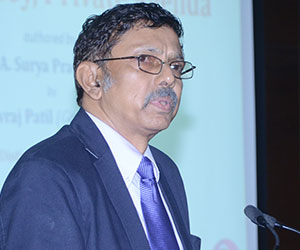


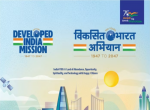
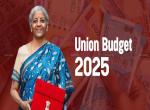
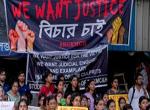


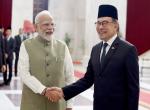
Post new comment